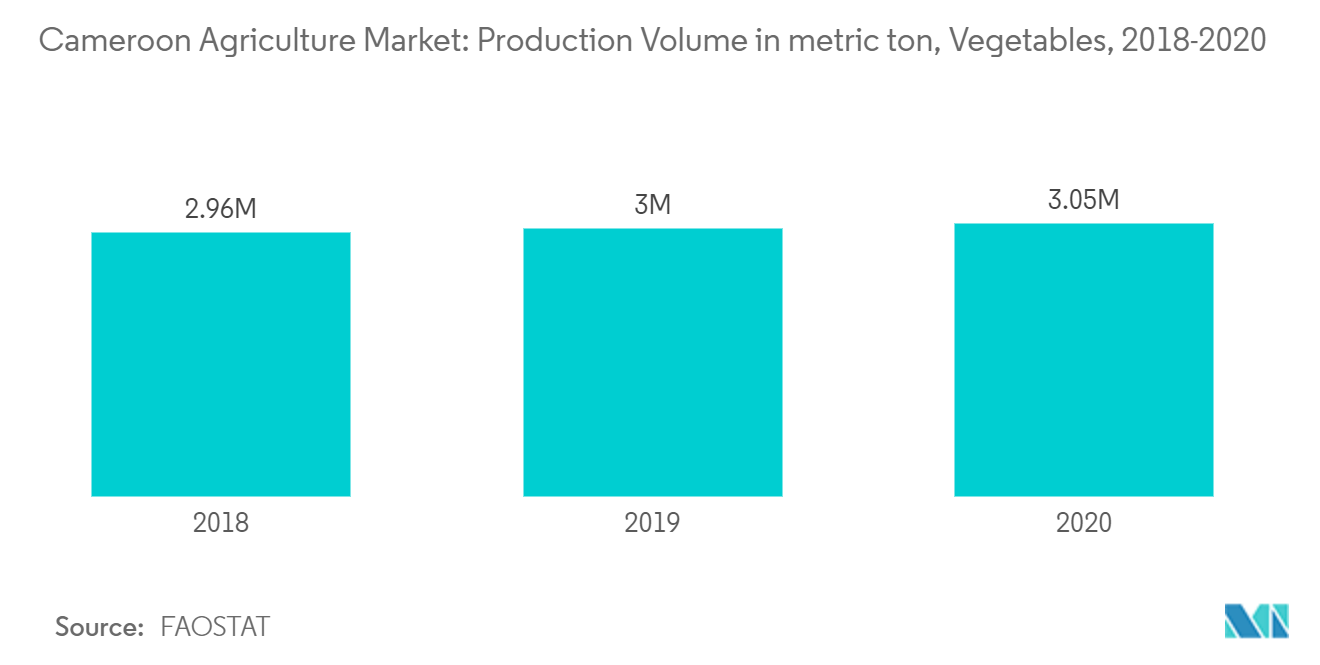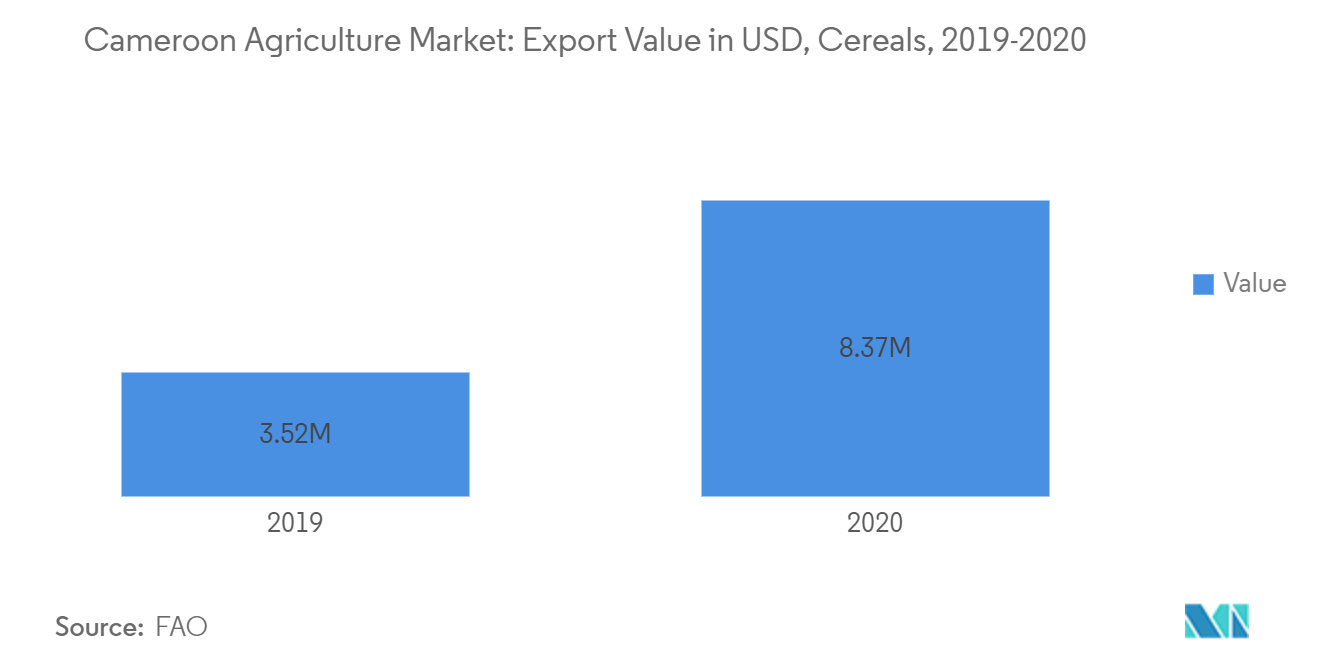Market Trends of Agriculture in Cameroon
Growing Consumer Preference for Locally Produced Fruits and Vegetables
Increased awareness across various social media platforms related to health and well-being has boosted the demand for various food products and fresh fruits and vegetables. It was estimated that South Africans spend nearly 16% of their incomes on fruits and vegetables. People in the country are discovering the link between healthy food and well-being, and are switching their alternatives to fruits and vegetables. With the rising health consciousness, there is also an increasing consumption trend toward varieties of off-season fruits, which are usually met by rising imports. For vegetables, like beans and cabbage, there is a recent trend of growing consumption, especially among the middle-income group in Cameroon. Crops such as potatoes, tomatoes, onions, okra, peppers, bananas, pineapples, watermelons, mangoes, avocadoes, melons, and peaches are some of the significant fruits and vegetable crops identified with great market growth in Cameroon during the forecast period. An increase in demand for fruits and vegetables was thus reflected by the rise in the production of fruits and vegetables in the country.
The World Vegetable Center in collaboration with Barry Callebaut carried out a project promoting vegetable production to diversify and improve incomes in cocoa communities in Cameroon by training the farmers with good agricultural practices for vegetable production and encourage some farmers to take up the vegetable seed kits containing at least four different crops covering the entire vegetable production process from nursery establishment to harvest. By this local farmers can be able to grow multiple varietyof fruits and vegetables produce which can attract the consumer to buy and this will help the market to grow in the coming years.

Rising Exports of Cereals
Cameroonian cereal crops dominate the agricultural market in the region. Maize is the most important cereal crop, followed by wheat and barley. South Africa reported a total of 2,091.2 metric ton of maize production in 2020. Climatic conditions, coupled with a lack of knowledge about transfer activities, are the major limitation to the agriculture sector in Cameroon.
Government initiatives, like the creation of Agri-parks, and the introduction of projects, like project IFAD, are expected to promote the cultivation of cereal crops in the country and enhance the well-being of rural poor people. Favorable climatic conditions and supportive government policies are expected to drive the Cameroonian food crop market. Maize accounts for more than 80% of the local cereal crop production in Cameroon.
The Cameroonian cereal crop market has matured considerably since the deregulation of marketing. Producers, traders, and other intermediaries interact freely in the marketing of their produce. The Cameroon government also gives the freedom to the farmers to choose the market where they want to trade their products. Hence, if the farmers do not get desirable prices for their production, they can sell their commodities in the international market. By this exports will increase and along with this farmers can also be benefitted which will help the market to grow during the forecast period.

